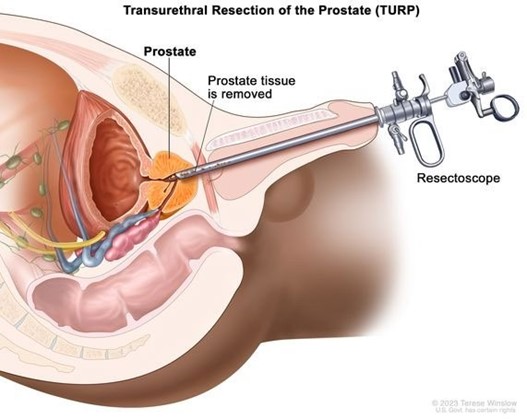A nurse is assisting with the care of an adolescent who is scheduled for surgery. Which of the following actions should the nurse plan to take?
Provide a tour of the perioperative area prior to surgery
Explain that anesthesia is a special type of sleep
Keep medical equipment out of the client's sight
Wait until after surgery to explain the importance of coughing and deep breathing
The Correct Answer is A
a . Provide a tour of the perioperative area prior to surgery.
The correct answer is a. Provide a tour of the perioperative area prior to surgery.
Explanation:
When caring for an adolescent scheduled for surgery, providing a tour of the perioperative area prior to the procedure is an important action for the nurse to take. Adolescents may experience fear and anxiety related to the unfamiliar environment and procedures associated with surgery. Providing a tour allows the adolescent to become familiar with the surroundings, equipment, and healthcare team, which can help alleviate anxiety and promote a sense of control.
Explanation for the other options:
b. Explain that anesthesia is a special type of sleep: While it is important to provide information about anesthesia to the adolescent, describing it as a "special type of sleep" may be misleading. Anesthesia is a medical procedure that involves more than just being asleep, and it is important to provide accurate information to the adolescent.
c. Keep medical equipment out of the client's sight: While it is important to create a comfortable and non- threatening environment for the adolescent, completely hiding medical equipment may not be feasible or necessary. Instead, the nurse should address any specific fears or concerns the adolescent may have and provide age-appropriate explanations and reassurance.
d. Wait until after surgery to explain the importance of coughing and deep breathing: It is important to provide preoperative education to the adolescent to promote their understanding and cooperation. Explaining the importance of coughing and deep breathing before surgery helps the adolescent prepare and participate in their own recovery. Waiting until after surgery may result in missed opportunities for early postoperative interventions.
In summary, providing a tour of the perioperative area prior to surgery helps familiarize the adolescent with the environment, reducing anxiety and promoting a sense of control.
Nursing Test Bank
Naxlex Comprehensive Predictor Exams
Related Questions
Correct Answer is ["A","B","C"]
Explanation
The correct answers are a. Document urine color, b. Monitor the client for reports of bladder spasms, and
c. Check the drainage tubing for obstructions.
a. Documenting urine color is important to monitor for any changes that may indicate complications or issues with the bladder irrigation. It helps identify any bleeding or clot formation.
b. Monitoring the client for reports of bladder spasms is crucial as bladder spasms can indicate irritation or obstruction in the urinary system. Prompt intervention can be provided to alleviate discomfort and prevent complications.
c. Checking the drainage tubing for obstructions is essential to ensure proper flow of the bladder irrigation solution. Obstructions in the tubing can lead to inadequate irrigation, which can affect the effectiveness of the procedure and potentially lead to complications.
d. Maintaining the client in a left side-lying position is not specifically indicated for continuous bladder irrigation after a transurethral resection of the prostate. The client's position should be based on their comfort and overall condition, and there is no specific requirement for a left side-lying position in this context.
e. Using clean technique for intermitent irrigation is not appropriate for continuous bladder irrigation. Continuous bladder irrigation requires aseptic technique to reduce the risk of infection and contamination.
By performing these actions, the nurse ensures proper monitoring, documentation, and maintenance of the bladder irrigation system, promoting the client's safety and well-being.

Correct Answer is D
Explanation
Answer: (D) A client has the right to view their medical record
Rationale:
A) The actual medical record belongs to the client: While clients have the right to access their medical records, the physical medical record itself typically belongs to the healthcare provider or facility that created it. The client does not own the physical document but has the right to view or obtain copies of it under HIPAA regulations.
B) A client's medical record information remains confidential, even during an emergency: While confidentiality is a core principle of the HIPAA Privacy Rule, there are specific exceptions during emergencies. For instance, healthcare providers may share information if it is necessary to provide care or if there is an imminent threat to the client or others. Thus, confidentiality can be adjusted in critical situations.
C) If the client dies, their family receives their medical record: A client’s medical records do not automatically go to their family after death. Access to a deceased person's medical records is typically granted to the executor of the estate or a legal representative, and specific legal processes must be followed. Therefore, this statement is incorrect.
D) A client has the right to view their medical record: Under the HIPAA Privacy Rule, clients have the right to access and view their medical records. They can request copies of their records, review them, and request amendments if they believe there are errors. This right is fundamental to ensuring transparency and accuracy in medical documentation.
Whether you are a student looking to ace your exams or a practicing nurse seeking to enhance your expertise , our nursing education contents will empower you with the confidence and competence to make a difference in the lives of patients and become a respected leader in the healthcare field.
Visit Naxlex, invest in your future and unlock endless possibilities with our unparalleled nursing education contents today
Report Wrong Answer on the Current Question
Do you disagree with the answer? If yes, what is your expected answer? Explain.
Kindly be descriptive with the issue you are facing.
